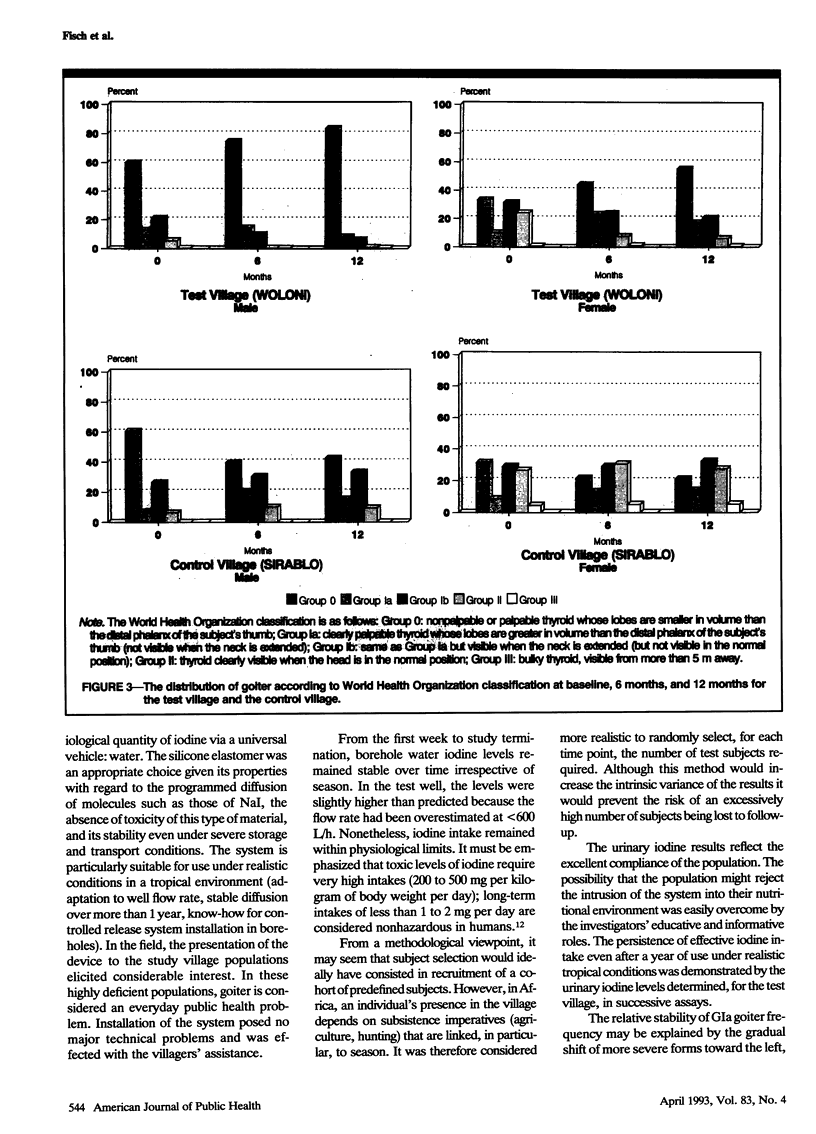Abstract
OBJECTIVES. Four hundred million people or more may be exposed to iodine deficiency worldwide, in developing countries in particular. Because of the practical problems with existing methods for the large-scale prevention of iodine deficiency, the authors developed a new approach to collective prophylaxis. METHODS. This approach relies on the controlled diffusion of iodine into water from a silicone elastomer. Silicone matrices installed in a bore well released iodine at a rate sufficient to permit the daily per capita intake of at least 100 micrograms of iodine, the amount recommended by the World Health Organization. The matrices were tested over 1 year in a village in Mali, West Africa, an area in which goiter was highly endemic. The effects on the well water and population were compared with those of a placebo system in a control village. RESULTS. An increase in urinary iodine levels was observed in the treated population, and after 12 months the incidence of goiter had fallen from 53.2% to 29.2%. CONCLUSIONS. This new concept, adaptable to all sources of water supply, may contribute to the eradication of iodine deficiency.
Full text
PDF





Selected References
These references are in PubMed. This may not be the complete list of references from this article.
- Eltom M., Karlsson F. A., Kamal A. M., Boström H., Dahlberg P. A. The effectiveness of oral iodized oil in the treatment and prophylaxis of endemic goiter. J Clin Endocrinol Metab. 1985 Dec;61(6):1112–1117. doi: 10.1210/jcem-61-6-1112. [DOI] [PubMed] [Google Scholar]
- Phillips D. I., Lusty T. D., Osmond C., Church D. Iodine supplementation: comparison of oral or intramuscular iodized oil with oral potassium iodide. A controlled trial in Zaire. Int J Epidemiol. 1988 Mar;17(1):142–147. doi: 10.1093/ije/17.1.142. [DOI] [PubMed] [Google Scholar]


